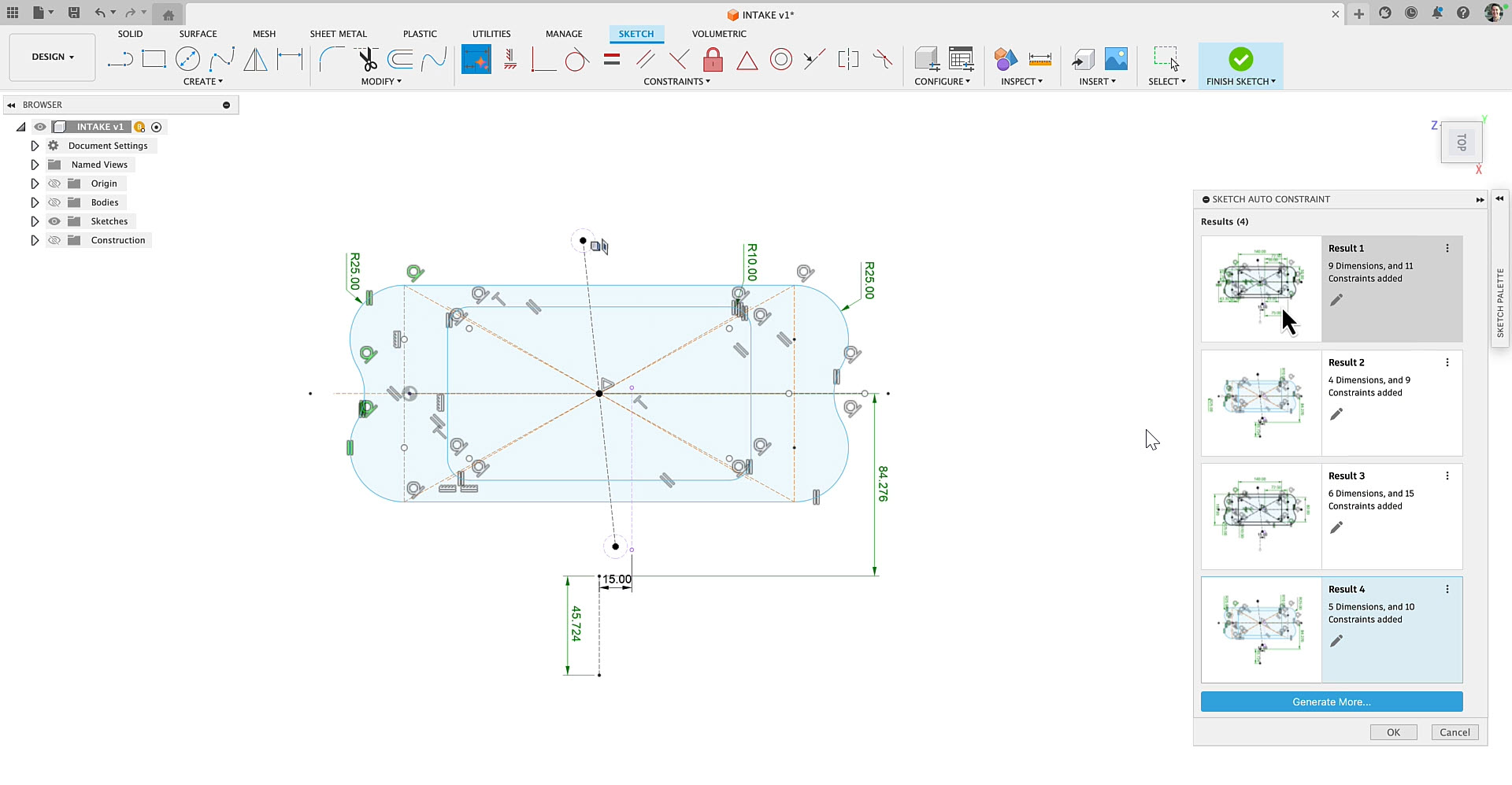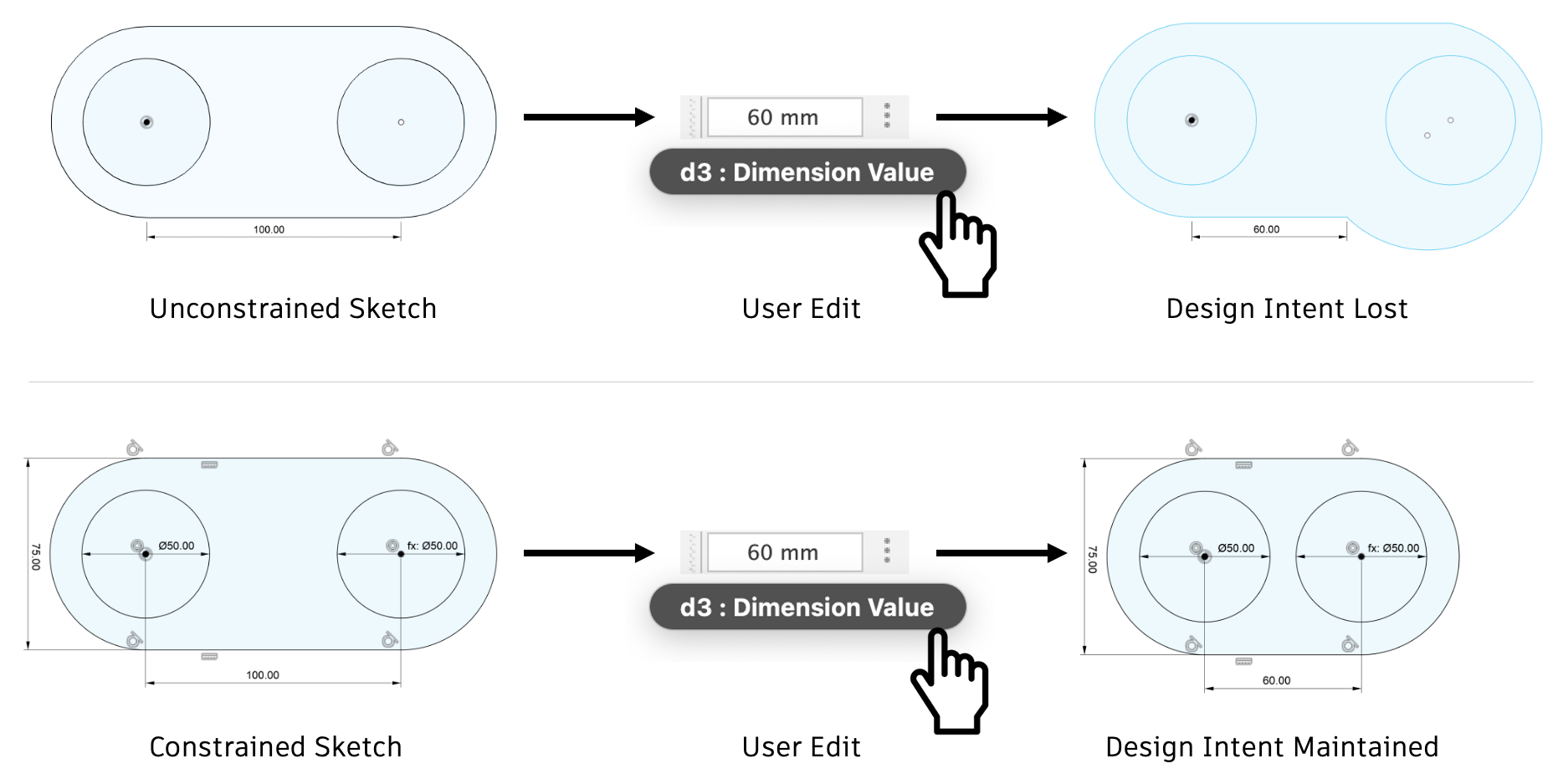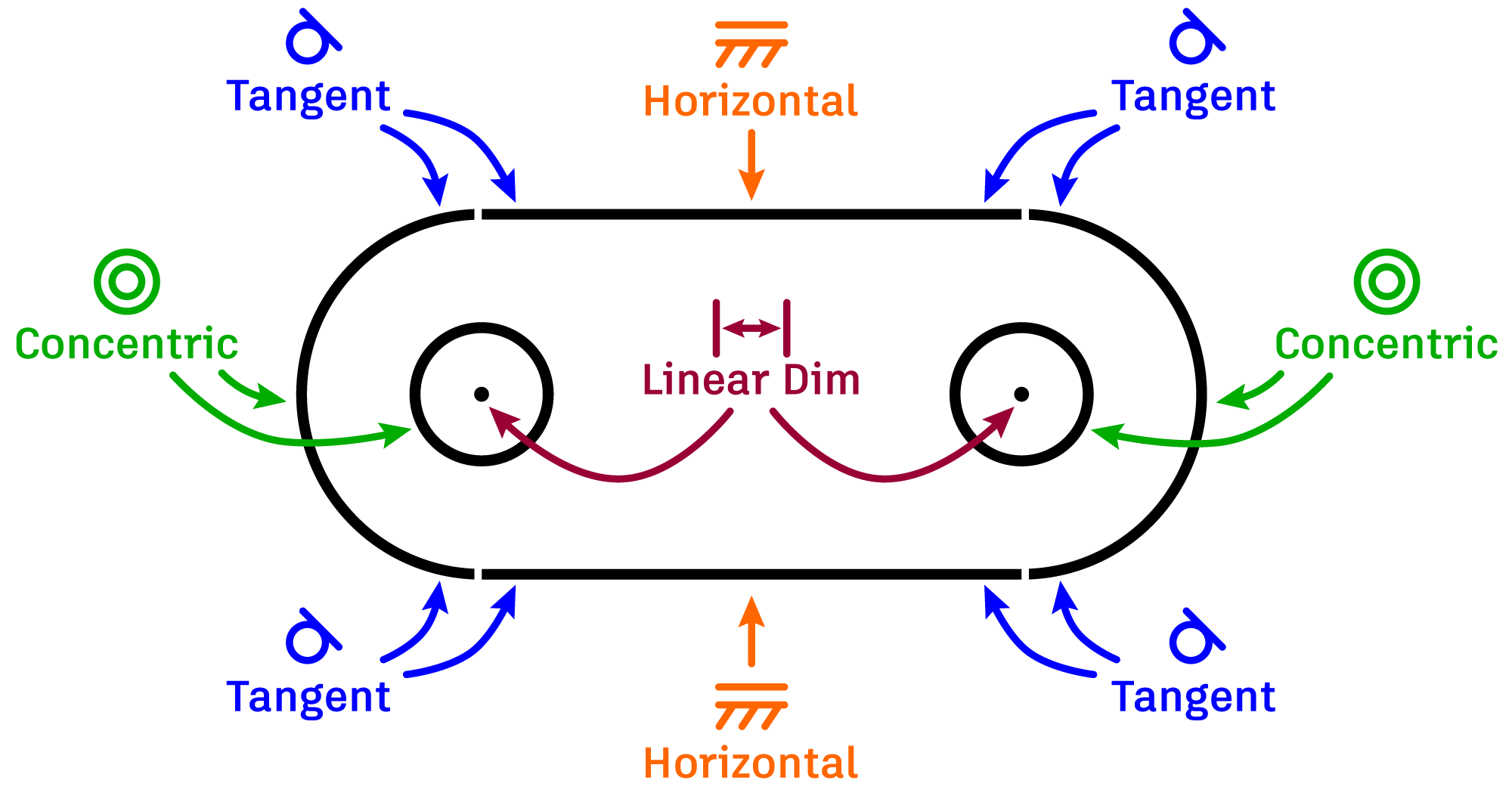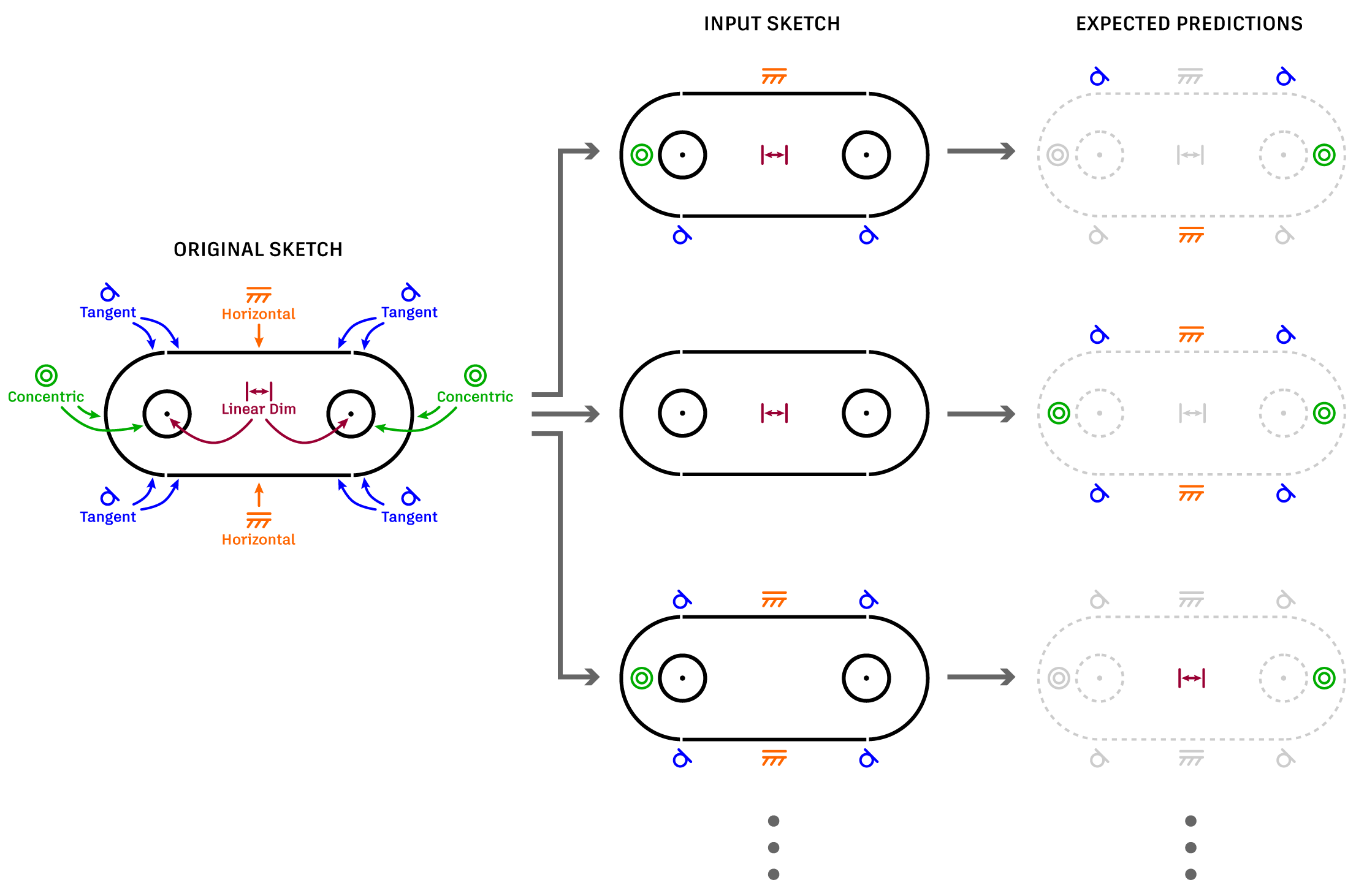AutoConstrain in Fusion

AutoConstrain is a new feature in Autodesk Fusion that uses machine learning to automatically infer and apply geometric constraints to engineering sketches. It helps transform loosely drawn 2D geometry into well-defined, parametric designs, automatically detecting relationships like horizontal, vertical, tangent, and equal.
This capability is powered by a deep learning model trained on 2D geometry to predict constraints and dimensions that maintain design intent. By analyzing the structure and layout of sketch entities, the model suggests constraints that not only make sense mathematically, but also align with how designers typically work.
Why AutoConstrain?
Sketch constraints are foundational to parametric design. They define how geometry behaves when modified and are critical to ensuring models are predictable and editable. But today, adding constraints is largely a painstaking manual process and often overlooked until things break.

In real workflows, designers either spend time adding constraints by hand or leave sketches underconstrained, leading to unintended behaviors during editing. As shown above, changing a dimension from 100 mm to 60 mm in an underconstrained sketch (top) distorts the design, breaking its symmetry. With proper constraints (bottom), the geometry adjusts predictably, preserving the intended relationships. With AutoConstrain, we set out to build a system that understands sketches the way a designer does, not just as lines and arcs, but as meaningful arrangements that imply design intent.
Learning to Constrain
At the core of AutoConstrain is a deep learning model that takes an engineering sketch as input and predicts a sequence of dimensions and constraints that reference the geometric primitives in the sketch. The sketch below shows how different constraints and dimensions reference sketch primitives. Tangent constraints (blue) reference a line and an arc, horizontal constraints (orange) reference two lines, and linear dimensions (red) reference two points.

As the AutoConstrain model must dynamically reference geometry within each sketch, we combine a Transformer decoder with a pointer network architecture. This allows the model to "point" to the relevant sketch elements during generation. The figure below shows how sketch primitives are provided as input and the output is a sequence of predicted constraints/dimensions that reference back to the sketch primitives.

To train the model we randomly remove constraints and dimensions, and task the model with predicting the missing elements. This allows the model to learn to complete partially constrained sketches in a way that is consistent with existing geometry and design intent.

To further improve results, we fine-tune the model on fully constrained sketches and apply Classifier-Free Guidance, a technique that biases the model toward generating complete, well-constrained outputs. These strategies improve the quality and usability of AutoConstrain.
Deep Collaboration
AutoConstrain is the result of deep collaboration across Autodesk’s research, product, and ML platform teams. As head of the Model Operations team, I helped guide the development of this feature from early-stage experimentation to production deployment. Our team focuses on operationalizing foundation models across Autodesk’s product portfolio, ensuring reliability, performance, and seamless integration into tools like Fusion. This project reflects the kind of AI we aspire to build at Autodesk: intelligent, intuitive, and embedded directly into the creative process to help users focus on what matters most—design.
Further Reading:
Using AI to Power AutoConstrain in Fusion – Autodesk Research Blog
Sketch AutoConstrain: AI in Manufacturing – Autodesk Fusion Blog